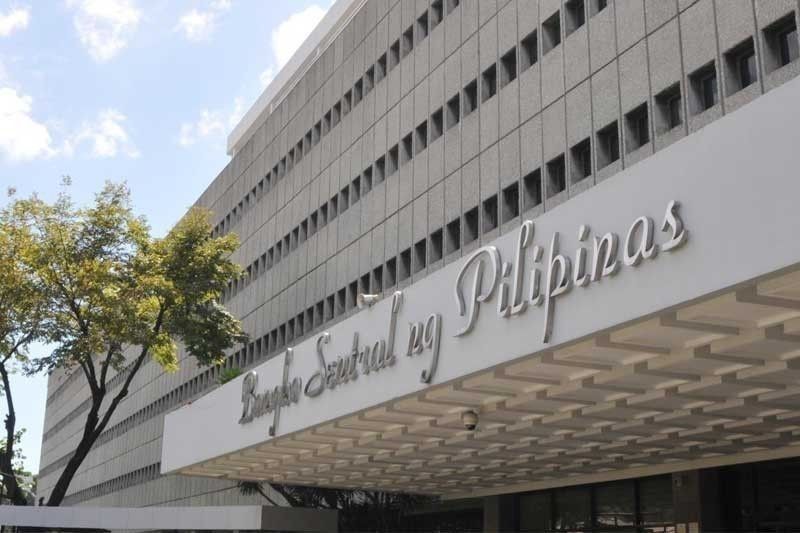No surprises as BSP maintains rate into the New Year

MANILA, Philippines — There were no fireworks at this year’s final meeting of the Bangko Sentral ng Pilipinas (BSP), which held off from deploying monetary stimulus to a struggling economy as inflation risks rose.
The seven-member Monetary Board kept the overnight borrowing rate at a record-low of 2%, while likewise maintaining the rates of deposit and lending facilities at 1.5% and 2.5%, respectively, BSP Governor Benjamin Diokno said on Thursday.
“The Monetary Board believes that an accommodative monetary policy stance, together with sustained fiscal initiatives to ensure public welfare, should quicken the economy’s transition toward a sustainable recovery,” Diokno said in a statement after the policymaking body’s meeting.
The decision caps BSP’s most aggressive easing yet this year when it slashed overnight borrowing rate by 200 basis points. The policy rate serves as benchmark for banks in pricing their loans, so lowering them signals to lenders to charge lower when lending.
At the same time, the central bank in 2020 also lowered mandated reserves by banks by the same magnitude to give them more funds to lend to consumers and business in the hope that credit goes to economic activities. The year ended without Diokno using the balance of 200 bps cut which his peers at the Board authorized him to deploy any time this year. It remains to be seen whether the same will be carried over to 2021.
“As with all decisions in the monetary policy stance, any action on the reserve requirements will remain data dependent and be guided primarily by the evolving outlook on inflation and growth,” BSP Deputy Governor Francisco Dakila Jr. said in a briefing.
“Accordingly, we will continue to monitor developments to see if prevailing conditions will warrant the granting of such authority to the Governor in 2021,” he said.
That said, it cannot be denied that BSP has done a lot this year to help a recovery from an unprecedented pandemic materialize. Emilio Neri Jr., lead economist at Bank of the Philippine Islands believed Diokno had done enough, but Alex Holmes, Asia economist for Capital Economics, still see BSP intervening next year when an expected growth return does not take shape.
Faster inflation next year
Either way, a more challenging inflation environment next year will limit BSP's scope to cut rates and reserves further. According to latest forecasts, BSP sees inflation averaging 2.6% this year, up from 2.5% seen in November. That new average was already achieved for the first 11 months.
Consumer prices would pick up faster in 2021 at 3.2% year-on-year from November’s 2.7% forecast. The following year, inflation forecast was kept unchanged at 2.9% annually. BSP targets inflation between 2-4% until 2022.
Rising global oil costs that could trickle down into local pump prices as reason for expectations of faster inflation. Food prices would also remain elevated because of crop damage from typhoons tightening supplies. Dakila however is not worried, saying food constraints are “transitory” in nature. “Forecasts remain comfortably within the inflation target band so the outlook remains benign,” he said.
But Nicholas Antonio Mapa, senior economist at ING Bank in Manila, disagreed. “Price spikes for food items tend to be sticky on the way down,” he said.
Similar with Holmes however, Mapa said faster inflation may not be enough to stop BSP from easing further if government spending remains disappointing, putting an expected shift back to economic growth next year at risk.
Whether or not fresh monetary stimulus will be effective in pumping up the economy is another question. For Dakila, early signs of rebound in mobility, after lockdowns crippled movements, is a good indication that the economy is getting its beat back. With it, hopefully, comes more lending from banks, whose growth has drastically moderated to 1.9% as of October, the weakest in 14 years.
Without lending, BSP’s easing strategy that released P1.9 trillion to the financial system is only returning the central bank through its bond and deposit auctions that are constantly swamped, instead of getting used for productive activities.
“The demand for loans in the economy, we recognized, is being partly hampered by household and business concerns in the progress in containing the virus,” Dakila said.
“While monetary policy can be most effective in the first phase of the crisis, government spending and structural measures have a much greater role in ensuring a sustainable recovery and restoring the potential output growth of the economy,” he added.
- Latest
- Trending





























